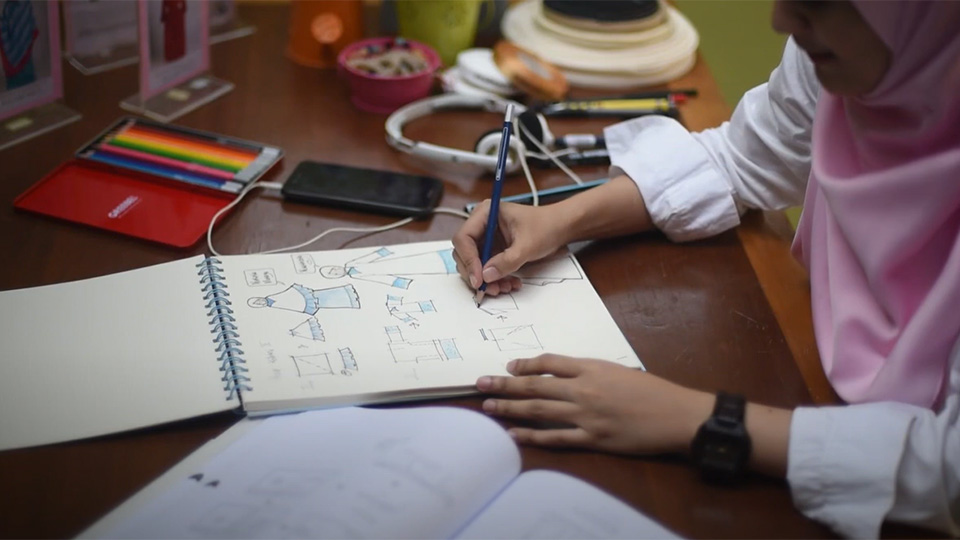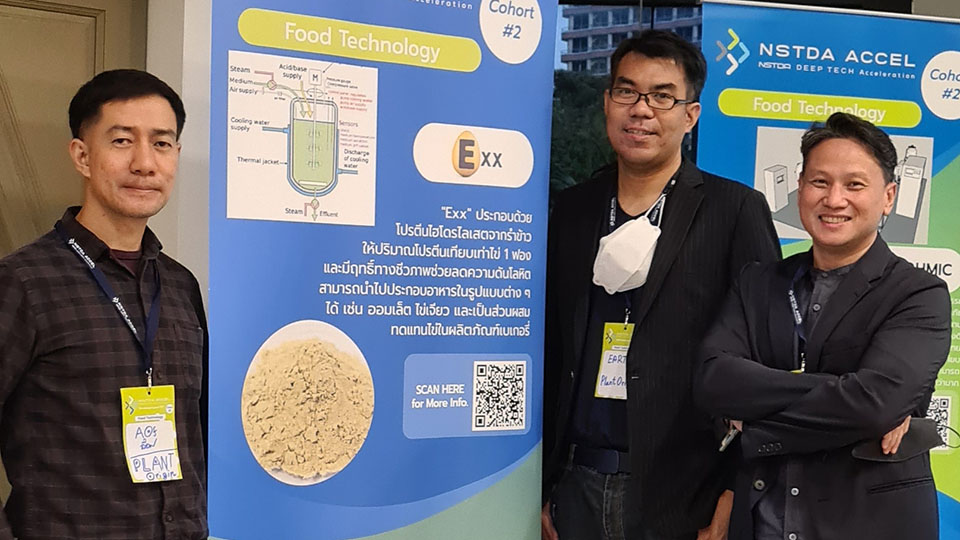Trikke Tech. Inc., Brazil
In 1988, Gildo Beleski, an inventor from the Federative Republic of Brazil (Brazil), co-founded Trikke Tech Inc. (TTI), a company that manufactures and distributes lightweight, three-wheeled human-powered vehicles (HPVs). Based in the state of California in the United States of America (USA), the HPVs from Brazil have become a popular and fun way for people of all ages to enjoy various recreational sporting pursuits such as road racing and skiing.

The vehicles, moreover, have become a hit in a number of fitness and rehabilitation programs. From humble beginnings, as of 2012 the company was a market-leader in HPV technology manufacture while achieving tremendous commercial success and brand awareness across the world.
Invention
In the late 1980s, Mr. Beleski tried to learn skateboarding and roller-skating but became frustrated because he constantly lost balance and fell to the ground. A physics graduate with a passion for downhill racing on skates, the entrepreneur applied his technical know-how and enthusiasm for wheeled sports to invent suspension parts and power trains (an assembly of gears and associated parts for transmitting power from a source to a driving axle).
These inventions were subsequently incorporated into compact HPVs with a three-wheeled base. Called 3 Cambering Vehicle (3CV) technology, the invention is a system that permits the user of a HPV to propel the three wheeled device – by a rocking and rolling motion and manipulation of handlebars – via a chainless, peddle-less instrument attached to the rear two wheels.
In 1988, Mr. Beleski and company co-founder Luiz Osorio Trentini, an engineering graduate, developed the first prototype HPV based on 3CV technology, which is similar to a traditional bike, only with three wheels.
Known as Trikke, the vehicles utilize the appearance of a BMX (bicycle motocross) bike and the swerving motion of a skier known as “carving”. Riding the vehicle gives a sensation similar to skateboarding or skiing.
However, the rider assumes a standing position, without a seat as in using a BMX bike, and the device offers greater stability and maneuverability, as compared to a ski, because of its chest high handle bars and three-point-base with wheels on each base.
Indeed, users need not place their feet on the ground in order to achieve propulsion; they need only lean their body weight in the required direction and turn the handle bar alternatively left and right to achieve a dynamic swerving motion and thrusting power.
Originally intended for downhill speed runs, the HPV is able to continue its forward motion on a flat plain if the user keeps up the same turning and leaning motions necessary to drive it.
An experienced Trikke HPV rider can reach speeds of up to 29 kilometers per hour (km/h) on flat surfaces, ride 800km in one a day, or climb steep hills (after considerable practice). Propelling the device can be physically demanding, but with experience and effective movement, riding Trikke HPVs quickly becomes an enjoyable and fulfilling experience.
The fun-to-ride HPV is between 1 – 1.5 meters long and can be ridden on sidewalks or city streets. Its three point base with 6 to 8 inch solid polyurethane wheels and aluminum alloy frames allows for stable movement. Helmets, however, are recommended when riding because wet conditions or uneven surfaces (with leaves or rough gravel) may cause the device to slip or tip over.
Speedy and fun but challenging, Mr. Beleski’s invention has caused a silent but increasingly visible revolution in the world of HPVs.
Research and development
In order to create the new device, in 1988 Mr. Beleski and Mr. Trentini established a workshop in Curitiba, the capital of the Brazilian state of Parana, and started research and development (R&D). By 1991, the inventor and his colleague had manufactured 1,000 units of the 3 wheeled cambering vehicles.

Having had difficulty commercializing the device and capitalizing on its early promise, in 1992 the business partners abandoned development of the first prototypes.
In the late 1990s, however, Mr. Beleski was inspired to dust off his original ideas when he noticed the enthusiasm with which many people exercised with various kinds of HPVs along the beach side paths in Miami Beach, the state of Florida, USA. Encouraged by the beach-goers’ love for HPVs, in 2000 the Brazilian inventor developed a new cambering mechanism for the product line and patented it.
He also created a business partnership with John Simpson, an American investor and entrepreneur, and branded the product with the name Trikke. In 2003 they were rejoined by Mr. Trentini who began marketing the new patented designs in Brazil. Thereafter, Mr. Beleski and Mr. Simpson established TTI (Trikke Tech Inc. Buellton as it was then called) in a new R&D facility based in Marina Del Rey, California.
With its large open spaces and public walkways peopled with enthusiastic fitness fans, California was natural ground in which the entrepreneurs sought to develop and re-launch a new Trikke HPV using cutting edge technology.
From the state-of-the-art TTI facility, in 2004 the entrepreneurs improved the original Trikke prototypes by adding twelve inch inflatable tires (in place of the solid polyurethane types), disc brakes, an enhanced 3CV and a folding aluminum alloy frame.
Further developments included varying the frame sizes and configurations to suit different body types and age groups. Only two years later, a new generation of vehicle – the Trikke Skki (which is gravity-propelled) – was developed and became an instant hit with snow-sports lovers. Based on the new and improved Trikke vehicle design, the Trikke Skki is used for downhill skiing and related sports.
Following fast on the heels of this innovation, in 2009 the Trikke Electric Hybrid, a 27 km/h HPV that is partly powered by an electric motor in the front wheel, was unveiled.
Having stalled in developing the original Trikke HPV, the colleagues were able to relocate to a high-tech R&D facility with a more conducive environment for developing new products. Holding the company tightly and wisely investing their resources, Trikke’s creators have successfully developed new models with multiple specifications and applications.
Branding, commercialization and licensing
Learning the lesson from an early failure in trying to enter the highly competitive outdoor sport’s market, TTI has engaged in imaginative branding and commercialization initiatives. Such initiatives have included launching media campaigns, licensing their technology and initiating grassroots brand awareness through novel competitive tournaments and marketing events.
In 2002, for instance, the Trikke brand gained international media attention following a feature on the device in Time magazine, a globally renowned publication. The company also uses TV campaigns with endorsements from well-known personalities in order to add credibility and integrity to its products with a view to attracting customers.

To compete against established HPV companies, TTI produces a wide range of products that are manufactured and branded to suit a variety of customers’ lifestyles. As of 2012, the company’s products consisted of seven different models: Trikke T5 (for children); Trikke T12 Roadster (for expert riders); Trikke Skki (for skiers); Trikke Electric Hybrid (for very young adults); Trikke T67 (for teenagers); three kinds of Trikke T78 (with great versatility, it permits various modifications in line with the user’s increasing ability); and Trikke Pon-E (a hybrid with an electric motor).
The well-made devices come in a variety of colors (including blue, red, yellow and green), are height adjustable and are recommended for users aged six years old and above. Commensurate with the many attractive brands, the company creates several accessories for its HPV such as the Tribred.
Having had difficulty commercializing the device and capitalizing on its early promise, in 1992 the business partners abandoned development of the first prototypes.
This optional electronic conversion kit is a wheel hub motor powered by a 36 volt battery that can be incorporated into the hub of the vehicle’s front wheel (on the T8, T12 and T78 models). Because the Tribred has motorcycle-type throttle, its speed can be adjusted.Trikke Skins, moreover, are removable and reusable decals (a plastic or paper substrate with a transferable image imprinted on it) that permit the user to personalize the company’s HPVs for individual or commercial purposes (displaying a company logo, for example).
Mr. Simpson, furthermore, launched a series of imaginative marketing drives based on competitions and demonstrations where expert Trikke users exhibit the device’s versatility in order to attract grass roots interest in the HPV. In this way, the company has been able to capture people’s imagination. As the entrepreneur said, “Snowboarding, in-line skating – a lot of this stuff started out in nontraditional ways.”
Indeed, the company hired Ulf Kappler, a German entrepreneur who was pivotal in establishing in-line downhill slalom skating as a competitive sport in Europe, to prepare a plan to redefine Trikke as a sport. Called Trikkathlons, in 2004 the first Trikke event was organized in Munich, in the Federal Republic of Germany (Germany), and included riders from across Europe.
Through such events (and others including touring teams of experts, competitors and demonstrators), the company intends to pique public interest and create a “Trikke culture” with associated ceremonies. Once the audience’s interest is captured due to the “What’s that?” effect, interested customers (or curiosity seekers) can be directed to specialized retailers with in-house trainers who can explain the product’s basic components and applications.
With fully trained sales people at the ready, Trikke has provided added value by offering quality service and advice to customers and thereby won over new clientele while maintaining loyal ones. Trikkathlons, moreover, have proved to be a successful brand awareness raiser and commercialization driver for the company.
Following the event in Munich, the 3CV World Sports Federation (3CVWSF) was established with the goal “to further develop and promote 3CV Sports globally and to organize and initiate 3CV Sport Competitions and Events on a regular basis.” 3CVWSF also organizes official Trikke races and events, and promotes and supports local, unofficial events such as group tours, fun rides and club rides based on the Trikke.
Such events involve Trikke clinics where specialist Trikke trainers explain the function and applications of using the device to inexperienced owners and prospective customers of the HPV. Similar events involve group rides for fun or to raise funds for charitable causes or community projects.
In 2009, furthermore, experienced Trikke enthusiasts attended the Goodwood Roller Marathon in Chichester, the United Kingdom (UK), in order to complete a full marathon distance using the company’s HPVs. Subsequently, Trikkathlons have been held in Germany, the Kingdom of the Netherlands (Netherlands), the Portuguese Republic, the Swiss Confederation and the Republic of Korea (ROK).

Group rides have also been held in major cities in the USA, and guided Trikke product tours have occurred in Paris, the capital of the French Republic, and within other tourist locations around the world.
Trikke’s popularity has continued to grow and the HPV can be used for many applications including recreational activities (such as walking pets), school physical education classes and security patrols (in airports and resorts, for instance). In addition, the device has been successfully deployed for guided tours; for physical rehabilitation; in sports (skiing and on-road riding); and in business (newspaper deliveries, for example).
Having captured the public’s imagination with colorful and fun products exhibited in exciting sporting events and clubs, as of 2012 Trikke HPVs were manufactured in the People’s Republic of China (PRC). In the same year, TTI was benefiting from licensing agreements for its 3CV technology, including a partnership with Razor USA LLC, a manufacturer of electric and manual scooters for children that is based in Cerritos, California.
Trikkes, further still, were retailed in specialist stores (such as Austin Trikke Skki) and via well-known generalized retailers (including WalMart, Modells, and Target) in more than three dozen countries around the world.
Trademark and patents
In order to enhance the hard earned good will associated with its product and protect the technology at its core, TTI relies on the intellectual property (IP) system.
In 2002, 2003 and 2004 the company registered a trademark for Trikke as a word and a figure in one of its most profitable markets, the USA, via the United States Patent and Trademark Office (USPTO). TTI, moreover, sought to protect two of its many brands by registering a trademark for eight, as a word and figurative, and 3CV, as a figure and a word, at the USPTO (2003).
In a comprehensive strategy to protect its corporate name in another large market for HPVs, the European Union (EU), the company applied for a trademark (2003) and it was registered as a word and a figurative at the Office of Harmonization for the Internal Market.
Furthermore, before launching full scale manufacturing for its HPV, the company took steps to protect the IP rights (IPRs) at the heart of its device by filing an international patent application for a “cambering vehicle and mechanism” (2002) via the Patent Corporation Treaty (PCT) system managed by the World Intellectual Property Organization (WIPO).

In addition, TTI filed an international patent application for a “cambering vehicle with improved handlebar and footboard ergonomics, heel support, and cambering joint” (2005) also using the international patent filing system established by the PCT. With IP protected assets in all its target markets, TTI has been able to expand from its base in California to over forty cities and countries around the world.
Public health
An integral part of TTI’s overall success has been the attendant health benefits that riders gain by using the Trikke. The vehicle is not only a fun-to-use product; it is also a fitness device providing a proven full-body exercise regime. To investigate the health giving properties associated with Trikke, in 2006 the company collaborated with two institutes from the Netherlands – the Expertise Centre of Movement Technology of Hague University and the Institute for Fundamental and Clinical Human Movement Science at the University of Amsterdam.
Among their many discoveries, the researchers found that ridding the company’s HPV entailed active use of the upper legs, buttocks, upper arms and shoulder muscles – without straining the joints.
In comparison to other recreational sports, the researchers found that by ridding a Trikke for one hour at an average speed of 15 km/h, the user burned 500 kilocalories (Kcal, a measurement of the amount of energy used) compared to aerobics classes where performers burn 450 Kcal over the same period. Moreover, it was determined that riding a Trikke is comparable to in-line skating, jogging and cross-country skiing.
HPVs are not only appealing to health fans; they are also attractive to environmentally conscious users. Trikkes are an environmentally friendly alternative transportation for users who would like to make short trips without, for example, using a car (which has a larger carbon footprint).
Fun to ride, environmentally sustainable and a boost to a user’s health, Trikkes have proven to be a versatile and competitive addition to the HPV business sector.

Business results
From a small workshop in Brazil, TTI has swerved, dipped and risen into the forefront of the three wheeled HPV world. Having stumbled initially, the company rebounded when it won Best Invention (2002) by Time magazine. Steadily finding a firm base, TTI rose in confidence and saw its annual sales gradually increased with each year from less than US$1 million in 2002 to approximately US$30 million in 2004.
Due to its success, the HPVs company continues to expand its brands portfolio and awareness campaigns. Indeed, in 2008 the first USA national time-trials for Trikke races was held at Wolf Mountain Ski Resort in Eden, in the state of Utah.
Consequently, TTI was able to launch a new range of products including Trikke Skki, which was awarded best product extension of the year (2006) by Gizmag, an established online publication for the technology industry.
The company has instituted a worldwide Trikke culture that is becoming a mainstay of fun summer and winter sports. As of 2012, Trikke HPVs retailed between approximately US$ 200 and US$1,000. The company’s vehicles are available in over 40 countries including the Commonwealth of Australia, Canada, ROK and throughout the EU.
Cambering through the Finish Line
Mr. Beleski successfully translated his constant misfortunes on a skateboard into a fortunate moment of invention. With the introduction of key business partners, the inventor established TTI in a new R&D facility and re-launched the company based on an inspiring new brand.
Supported by imaginative out-reach initiatives and a comprehensive IP assets strategy, TTI has subsequently transformed from a failing business idea into a global market leader. Because of Trikke HPVs, winter and summer sports fans have gained a new, challenging and healthy means to have fun and get fit without adversely impacting the environment.



